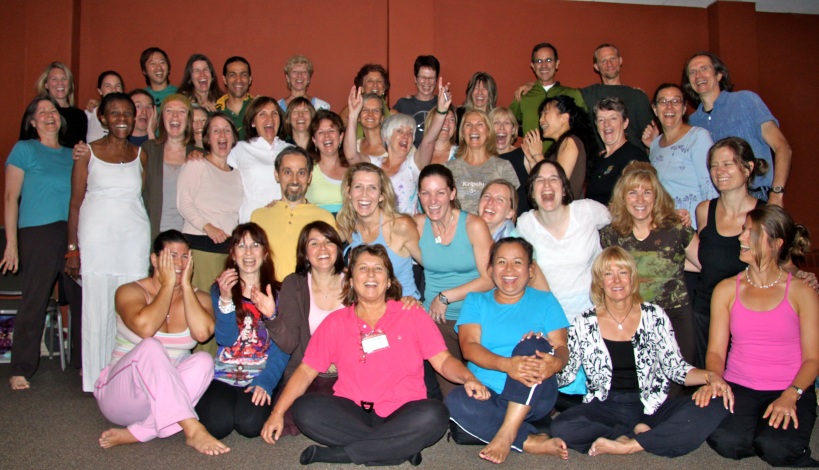
I’m just home from leading a nine-day training on teaching meditation. This is part of a 500-hour Advanced Yoga Teacher Training program at Kripalu Center. This group of 40 was made up of active and experienced yoga teachers. The retreat was deep, still, filled with tears and laughter. I kvell when I think of each of these gifted and dedicated leaders taking meditation out into the world.
We covered a wide variety of techniques:
- Breath-based Meditation
- Sensation-based Meditation
- Mantra Meditation
- Walking Meditation
- Standing Meditation
- Body-scan and Lying Down Meditation
- Conscious Eating
- Open-eyed Meditation (Tratak)
- Loving Kindness Meditation
- Slow Motion Prana Meditation
We focused on core, simple techniques that help practitioners shift from thinking to ‘being.’ Through the days of practice and sharing about techniques and their effects, I’m reminded how each moment requires caring attention and a question of ‘how this moment wants me to be with it.’
The yogic approach to meditation speaks of the balance of ‘chitta and prana.’ Chitta is mind and awareness. Prana is energy and feeling.
We are constantly seeking balance between the two. If you come home in your head and wound up tight from a hard day at work, you’ll want to do something to loosen up: go for a run, do some yoga, pop a beer, take a nap, cook a meal.
Signs of ‘too much prana’ are those times when you are over-emotional, have 10,000 idea but just can’t complete one, feel confused and lost. You’ll want to get your ‘chitta together’ and focus on what’s most important. You might talk to someone to get some perspective or try to get centered, get some perspective and cultivate a sense of priorities.
Some meditation techniques, like counting breaths or steps when walking, are designed to cultivate one-pointedness and concentration. Other techniques, like slow-motion moving meditation and chanting, can open us up to a greater sense of flow and expansion.
I’m honored to have had this time with such dedicated and sincere teachers. More photos at my flickr site. I’ve got a lot of shots here so folks can pick the ones they like best.
Hi Jonathan!
It looks great! I tend to be suspicious of mantra meditation. I can see how it supports concentration, but I’m worried that it takes you away from trying to be present, from vipassana’s goal of literally seeing clearly into the nature of life and of the mind. I’m worried the mantra is a placebo. I have trouble not judging transcendental meditation. I’m wondering what your thoughts are on that.
Comment by G — August 10, 2009 @ 11:58 pm
I did TM for 15 years and loved it. I have found, though, that it does tend to ‘trance me’ a little …. VIpassana, being more body-oriented, definitely promotes greater sharpness and more distinctions.
Mantra is deeply soothing and can also be quite relaxing. In TM, they speak of how ‘the more dynamic your rest, the more dynamic your activity.’ To that end, mantra is quite powerful.
I think as we go through this journey, we begin to find techniques that work best at different times.
Blessings in your practice!
Comment by jonathanfoust — August 11, 2009 @ 12:55 pm
Kvell? Is that like kvetch?
Comment by Ellen — August 11, 2009 @ 10:18 pm
I’m not Jewish, but I love the word! Etymology: Yiddish kveln to be delighted, from Middle High German quellen to well, gush, swell
Comment by Jonathan Foust — August 12, 2009 @ 12:02 pm